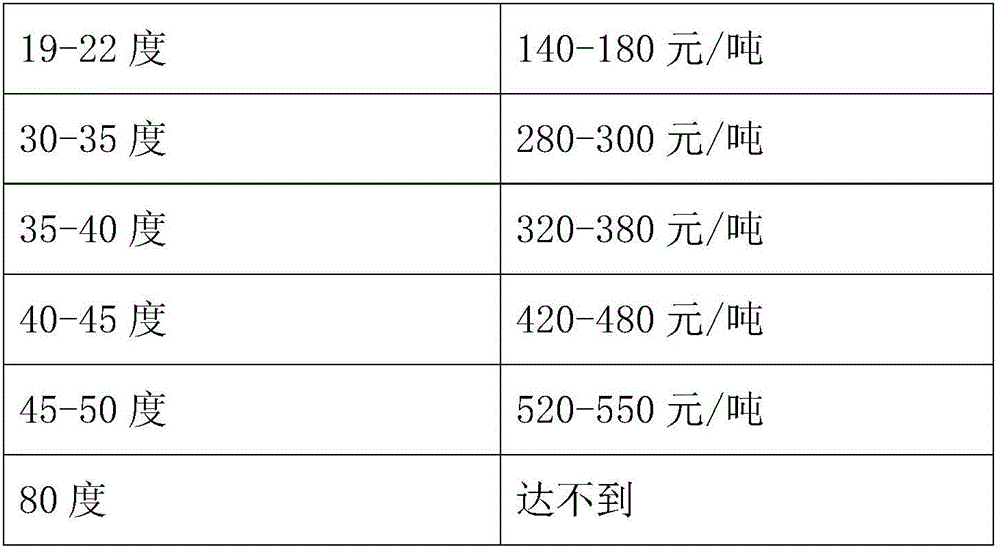Dyeing-assistant fancy glaze capable of promoting pigment color development and ceramic tile prepared from same
A technology for ceramic tiles and colored flowers, which is applied in the field of ceramic tiles to achieve the effects of promoting color development of pigments, clear boundary texture, and enhancement of color strength.
- Summary
- Abstract
- Description
- Claims
- Application Information
AI Technical Summary
Problems solved by technology
Method used
Image
Examples
Embodiment 1
[0035] This embodiment provides a color-aiding glaze that can promote the color development of pigments. It is calculated in parts by mass and includes the following components: 100 parts of high-zinc frit, 130 parts of printing paste, 0.3 parts of sodium tripolyphosphate, 40 parts of water;
[0036] The chemical components of the high-zinc frit are calculated in parts by weight of oxides, and include the following components:
[0037] SiO 2 : 53 parts, ZnO: 21 parts, K 2 O: 4 parts, Al 2 o 3 : 7 parts, MgO: 3 parts, CaO: 3.5 parts.
[0038] High-zinc frit has a good effect on the color development of pigments, but the hardness of transparent glazes that use a large amount of zinc oxide as raw materials is poor, so the high-temperature viscosity of potassium raw materials used in high-zinc frits, It also contains a certain amount of calcium and magnesium raw materials. Using the color-aiding glaze provided by the invention can greatly improve the color development intens...
Embodiment 2
[0041] A kind of production technology of ceramic brick is provided in the present embodiment, and it comprises the steps:
[0042] Step 1) Selecting known ceramic body powder to be stamped into brick adobe;
[0043] Step 2) applying a known top glaze on the surface of the green body by glazing to form a top glaze layer;
[0044] Step 3) printing on the glaze layer to form a printing layer;
[0045] Step 4) distributing the color-aiding glaze, which is calculated in parts by mass and includes the following components: 100 parts of high zinc frit, 130 parts of printing paste, 0.3 parts of sodium tripolyphosphate, and 40 parts of water; The chemical composition of zinc frit is calculated in parts by weight of oxides, including the following components: SiO 2 : 53 parts, ZnO: 21 parts, K 2 O: 4 parts, Al 2 o 3 : 7 parts, MgO: 3 parts, CaO: 3.5 parts;
[0046] Step 5) go into kiln and burn;
[0047] Step 6) Polishing and edging the fired body to obtain a ceramic tile product....
Embodiment 3
[0056] This embodiment provides a whitening glaze suitable for screen printing, which is calculated in parts by mass and includes the following components: transparent frit: 50 parts, zirconium silicate: 50 parts, printing paste: 65 parts, three Sodium polyphosphate: 0.3 parts, water: 35 parts;
[0057] The chemical composition of the transparent frit is calculated in parts by weight of oxides, including the following components:
[0058] Na 2 O: 5 parts, CaO: 9 parts, ZnO: 8 parts, Al 2 o 3 : 8 copies, B 2 o 3 : 2 parts, SiO 2 : 60 servings.
PUM
 Login to View More
Login to View More Abstract
Description
Claims
Application Information
 Login to View More
Login to View More - R&D
- Intellectual Property
- Life Sciences
- Materials
- Tech Scout
- Unparalleled Data Quality
- Higher Quality Content
- 60% Fewer Hallucinations
Browse by: Latest US Patents, China's latest patents, Technical Efficacy Thesaurus, Application Domain, Technology Topic, Popular Technical Reports.
© 2025 PatSnap. All rights reserved.Legal|Privacy policy|Modern Slavery Act Transparency Statement|Sitemap|About US| Contact US: help@patsnap.com



